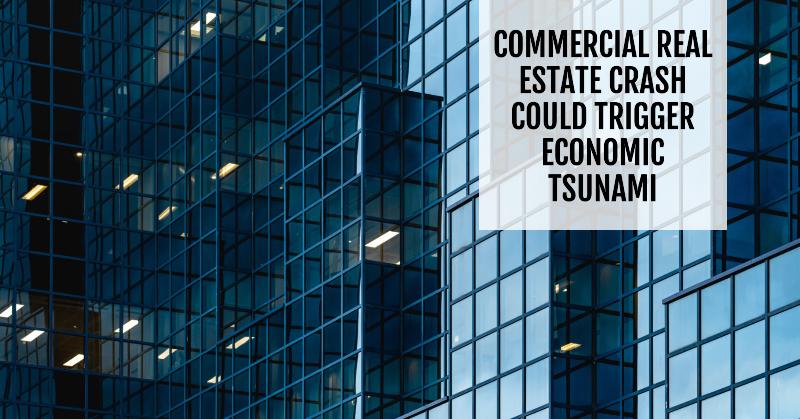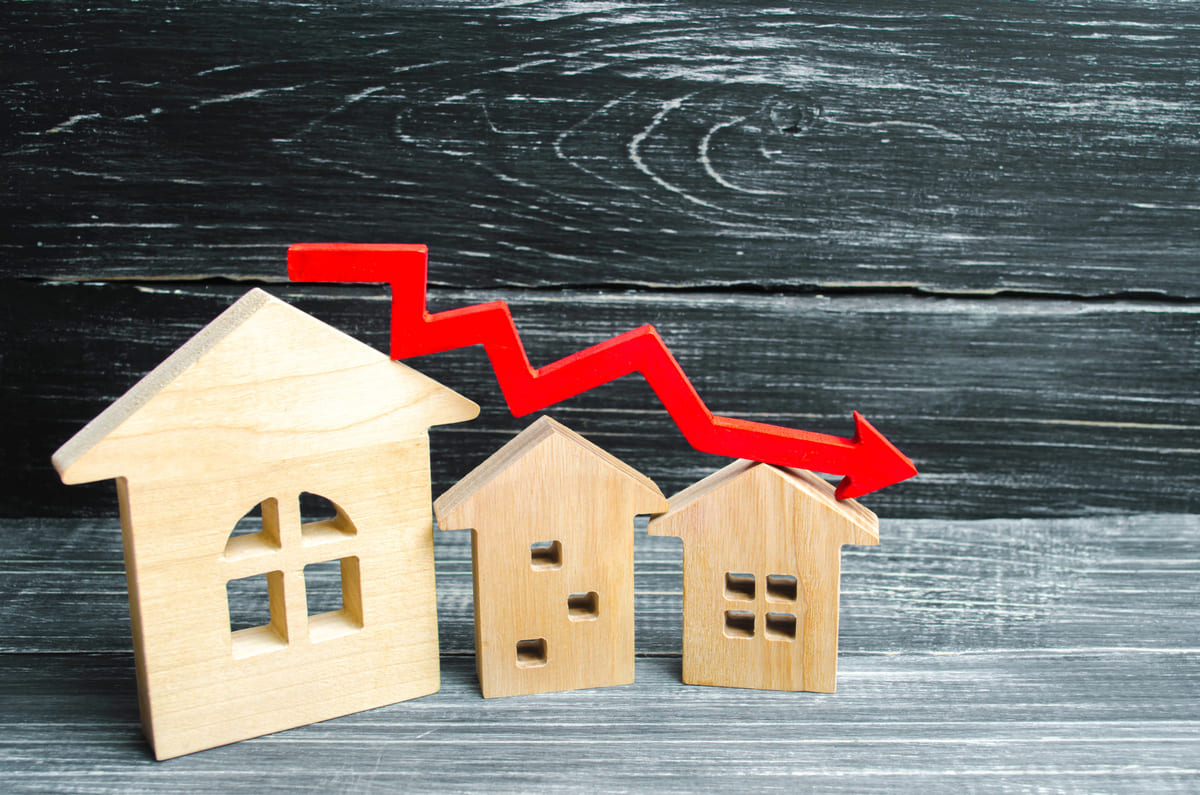For decades, commercial real estate has been the bedrock of the American economy. A steady, reliable giant. But now, cracks are appearing in this foundation. A chorus of financial experts is sounding alarms, warning of an impending crisis that could reverberate far beyond the property market.
With over a trillion dollars in commercial real estate loans maturing in the next two years, the perfect storm is brewing, Harvard Business Review reports. Rising interest rates, coupled with plummeting property values, have created a treacherous landscape for lenders and investors alike. And the implications for the broader economy are profound.
Is this the beginning of a domino effect that could topple even the most stable financial institutions? The evidence is mounting.
U.S. Commercial Real Estate Is Headed Toward a Crisis
The alarm bells in the commercial real estate market echo louder as it grapples with a unique trifecta of challenges. These include the aftermath of the COVID-19 pandemic, rising operational costs, and deteriorating property valuations. A key revelation highlighted by Harvard Business Review is a distinct pattern of overexposure of U.S. commercial banks to the CRE sector, particularly among community and regional banks, which have become increasingly vulnerable to market fluctuations.
The Financial Tightrope: $1 Trillion in Commercial Real Estate Loans
According to an analysis from The Conference Board, a staggering over $1 trillion in CRE loans will be due over the next two years, significantly impacting small- and midsize banks. Many of these financial institutions lack sufficient capital cushions, placing them at heightened risk for considerable losses. As the Federal Reserve maintains elevated interest rates, property valuations are expected to decline, creating a perfect storm for banks to face delinquencies and default risks.
How Did We Get Here?
So, what precipitated this precarious situation? The roots can be traced back to several significant economic shifts post-pandemic. The pandemic fundamentally altered work patterns, resulting in an accelerated move towards remote and hybrid working models, leading to increasing office space vacancies. Heightened operational costs, largely driven by surging insurance premiums, labor shortages, and energy prices, further stoke the crisis. An aging population seeking more skilled labor compounds the issue, forcing companies to increase wages. This economic strain is particularly acute in sectors most reliant on physical property, such as retail and office spaces.
The Rise of Delinquency Rates: A Worrisome Trend
The ripple effects of rising operational costs and falling property values are evident in the alarming increase in delinquency rates on CRE loans. Over the last six quarters, the percentage of nonperforming CRE loans doubled, climbing from 0.54% to 1.25%. This statistic showcases a concerning trend that mirrors previous financial downturns, specifically the lead-up to the 2008 recession when loan delinquencies significantly increased.
Analyzing Bank Exposure to CRE Loans
One of the most unsettling aspects is the disproportionate exposure smaller banks have to CRE loans. Data show that small banks (with assets between $100 million and $1 billion) have CRE loan values exceeding 158% of their risk-based capital, while midsize banks are even more exposed, with a ratio of 228%. In stark contrast, large banks (assets over $10 billion) exhibit significantly lower ratios of 142%, and the largest banks are at 56%.
This disparity indicates that while larger institutions have more robust capital buffers and regulatory requirements, smaller banks may resort to “extend and pretend” strategies—delaying the recognition of losses in hopes of a market recovery. Such approaches may be dangerously misguided and could exacerbate economic instability.
Potential Triggers of a Crisis
What could push the commercial real estate sector over the edge? Several factors loom large on the horizon:
- Simultaneous Bank Failures: Should multiple community and regional banks attempt to raise equity capital concurrently, it could lead to instabilities in the banking system—akin to the panic witnessed in March 2023 when only a few banks faced severe pressure.
- Financial Market Volatility: The repercussions of the current volatile economic environment could trigger greater demand for credit risk compensation, increasing yield requirements for investors.
- Economic Recession: A new recession could accelerate concerns in an already precarious market, creating a domino effect leading to widespread asset devaluation.
The Potential Fallout for the Economy
Should these triggers materialize, the fallout could be catastrophic, with potential losses rippling through the financial system. If CRE loans experience a 10% loss, it would leave more than 100 small and midsize banks undercapitalized. A 20% loss could push over 900 banks, including some larger institutions, into a similar predicament.
Furthermore, properties categorized as Class A—those enjoying consistent demand—may fare better than Class C properties situated in distressed areas amidst the ongoing shift in tenant preferences towards newer facilities. Continuous valuation challenges will only complicate banks’ ability to assess and mitigate potential losses adequately.
The Road Ahead: Strategies for Navigating a CRE Crisis
As corporate leaders monitor these unfolding events, they must adapt proactively to mitigate potential risks. Here are a few strategies that firms should consider:
- Examine Banking Relationships: Companies should evaluate their long-term banking partners’ balance sheets, particularly focusing on institutions heavily exposed to CRE loans.
- Extend Debt Maturities: Extended loan terms may provide the necessary breathing room as market conditions evolve.
- Maintain Adequate Liquidity: Companies should ensure they possess sufficient cash reserves and diversifications across various financial instruments to weather potential financial shocks.
Closing Thoughts
The forecast regarding the future of U.S. commercial real estate brings an air of urgency. The combination of escalating risk factors—from the impending maturity of significant CRE loans to rising interest rates—raises fundamental questions about the longevity of the sector. As we look towards the future, it becomes clear: businesses cannot afford complacency. Proactive measures will be vital in navigating what could very well be a historic reckoning for the commercial real estate market. The time to pivot, adapt, and prepare is now—before the crisis becomes a reality.
Work with Norada in 2025, Your Trusted Source for
Turnkey Real Estate Investing
Discover high-quality, ready-to-rent properties designed to deliver consistent returns.
Contact us today to expand your real estate portfolio with confidence.
Contact our investment counselors (No Obligation):
(800) 611-3060
Read More:





